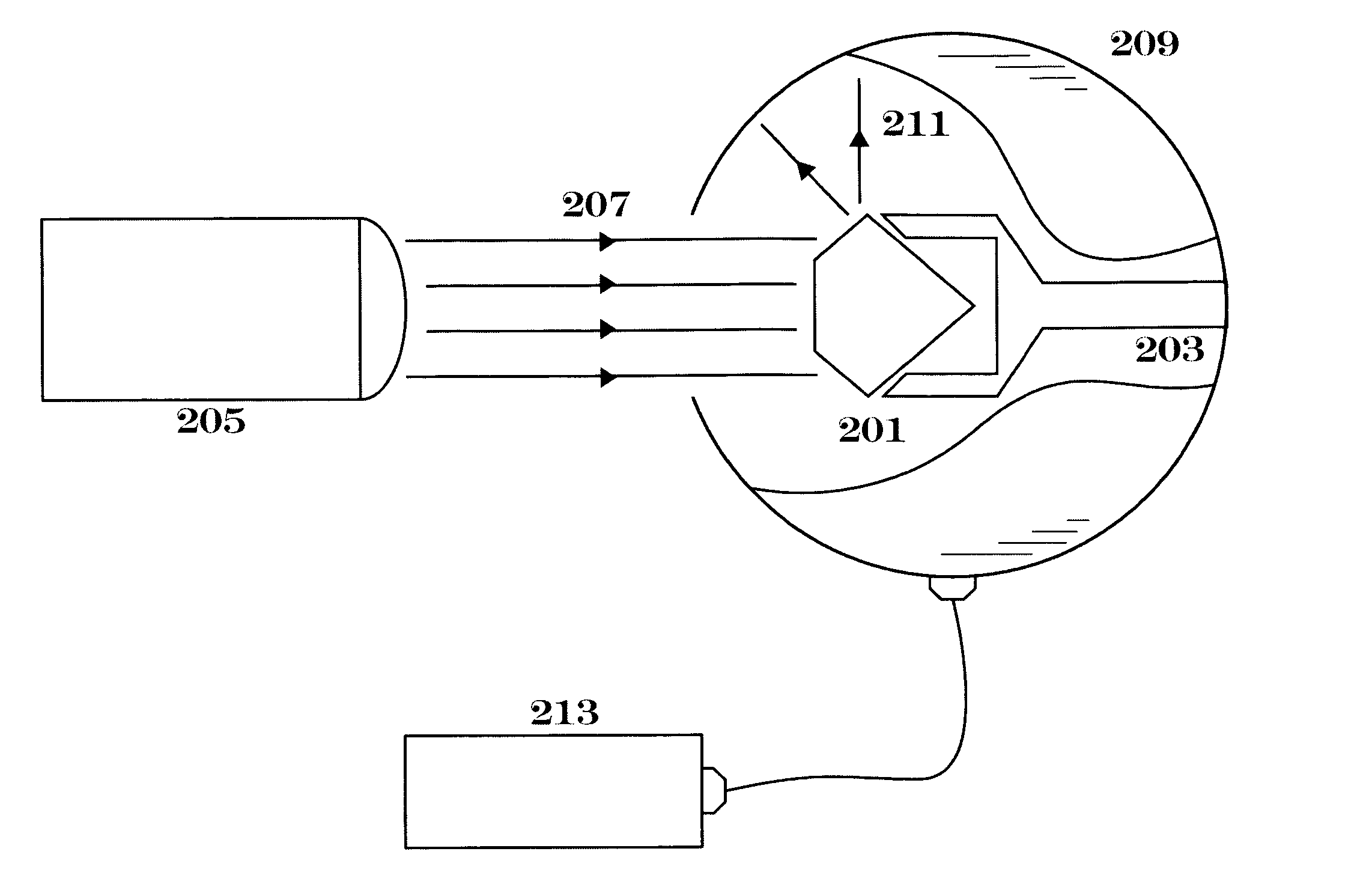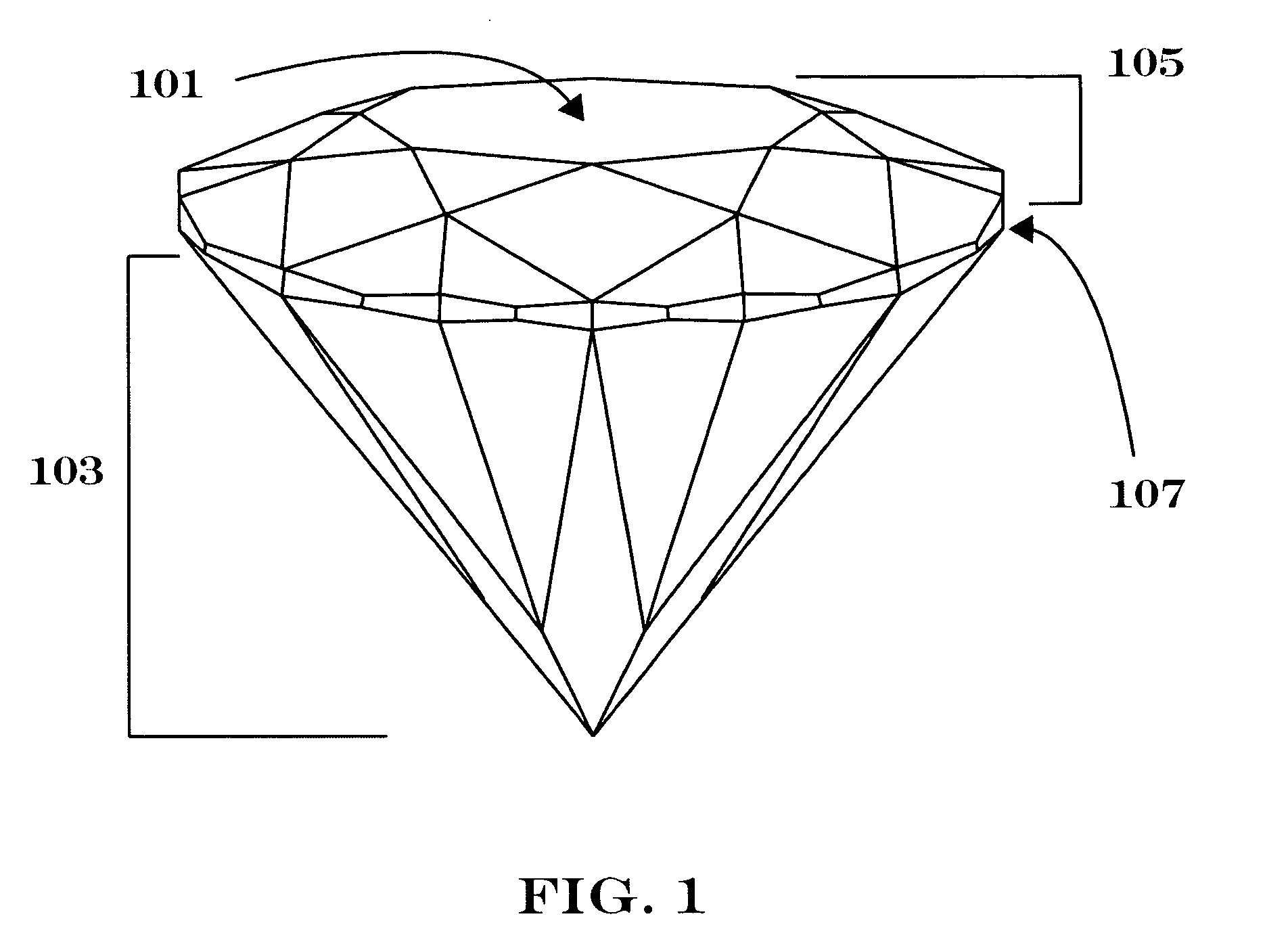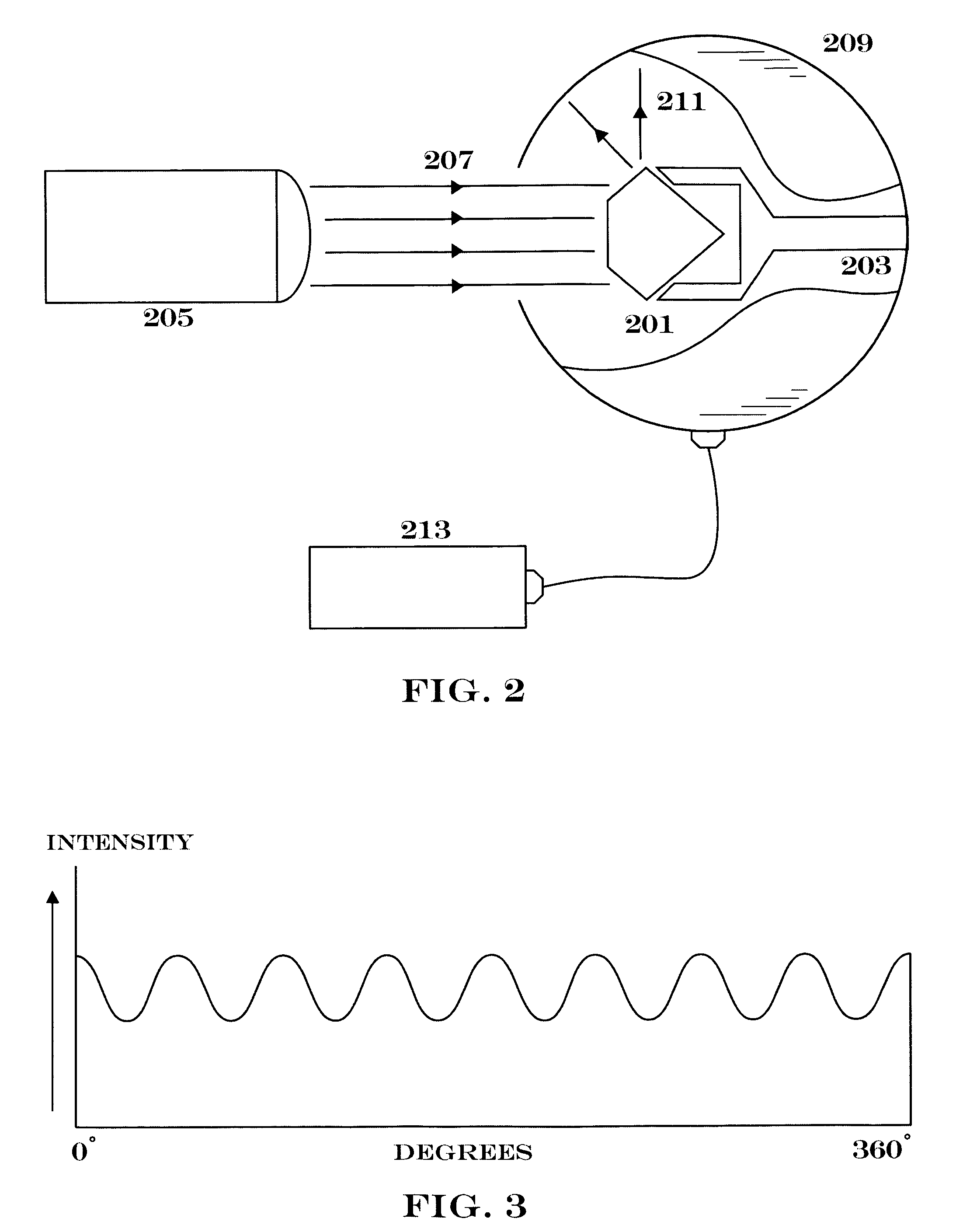Method for grading gemstone cut and symmetry
a technology applied in the field of gemstone cut and symmetry grading, can solve the problems of wide margin of error, leakage of diamonds that allow light to pass out of the pavilion instead of out of the crown, and minimize reliability and reproducibility
- Summary
- Abstract
- Description
- Claims
- Application Information
AI Technical Summary
Benefits of technology
Problems solved by technology
Method used
Image
Examples
Embodiment Construction
[0030]The present invention provides a rapid, repeatable, direct, comprehensive, calibrated, and objective measurement of a heretofore subjective quality of a gemstone. The inventor believes that the primary use of his invention will be to objectively demonstrate the subtle differences between gemstones to more accurately establish value. The present invention provides a method for graphically depicting the symmetry and cut of a gemstone that can be easily compared with such a graphical or statistical depiction of another gemstone. The inventor believes that this apparatus and method will be useful for distinguishing between two gemstones that have substantially identical characteristics as described by reports from the GIA.
[0031]The typical first step in a retail setting for analyzing the worth of a gemstone, especially a diamond, is to refer to a GIA report that sets forth several objective characteristics such as color, clarity, and weight. By example, two diamonds were analyzed ...
PUM
| Property | Measurement | Unit |
|---|---|---|
| angle of incidence | aaaaa | aaaaa |
| size | aaaaa | aaaaa |
| color | aaaaa | aaaaa |
Abstract
Description
Claims
Application Information
 Login to View More
Login to View More - R&D
- Intellectual Property
- Life Sciences
- Materials
- Tech Scout
- Unparalleled Data Quality
- Higher Quality Content
- 60% Fewer Hallucinations
Browse by: Latest US Patents, China's latest patents, Technical Efficacy Thesaurus, Application Domain, Technology Topic, Popular Technical Reports.
© 2025 PatSnap. All rights reserved.Legal|Privacy policy|Modern Slavery Act Transparency Statement|Sitemap|About US| Contact US: help@patsnap.com



